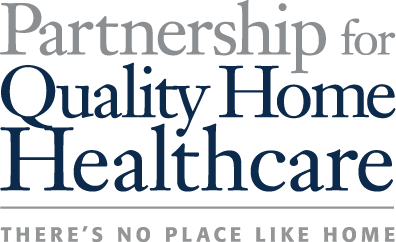July 27, 2015
Stability and Reform: Striking a Balance
Posted in: News
Morning Consult
Good health policy, in many ways, mirrors good healthcare. Resolving complex medical issues means treating the entire patient. True success therefore requires resolving the immediate threat even as a more holistic approach is taken so that the patient can heal and thrive.
When it comes to health policy – particularly the issues currently facing home health – this presents an obvious challenge: specifically, how can a balance be struck between immediate needs and long-term goals?
To their credit, both Congress and the Centers for Medicare & Medicaid Services (CMS) are striving to strike this balance. On the one hand, action is being taken to meet immediate needs – Congress’ recent passage of legislation fixing the much-maligned Sustainable Growth Rate (SGR) is an excellent example. On the other, Congress and CMS are pursuing greater value for patients and taxpayers through reforms that can improve outcomes while reducing costs over the long term.
That said, striking such a balance is much easier said than done.
In recent weeks, CMS released a proposal calling for the creation of a Value-Based Purchasing (VBP) program pilot as part of changes to the Medicare Home Health Prospective Payment System (HHPPS) for 2016. VBP programs have proven to be successful elsewhere in Medicare and are widely supported by home health providers. In addition, CMS has proposed a bold Comprehensive Care for Joint Replacement (CCJR) initiative that will harness home health agencies (HHAs) and other providers to achieve more than $150 million in savings through more clinically- and cost-effective care delivery.
At the same time, however, Medicare’s home health agencies are dealing with the harsh consequences of continuing and newly-proposed payment cuts. Beginning last year, HHAs have been hit with a deep 14 percent, 4-year rebasing cuts that CMS itself said will cause “approximately 40 percent” of all HHAs to suffer negative margins by the end of 2017. Adding further risk are additional payment cuts that CMS included in its HHPPS proposed rule for 2016. One such cut would reduce Medicare home health funding by nearly 3.5 percent in 2016 and 2017 – on top of the 14 percent rebasing cuts that are already underway. Another policy would put between 5 to 8 percent of many providers’ Medicare reimbursement at risk as part of CMS’ proposed VBP program.
Combined, these additional cuts will exacerbate the challenges that thousands of HHAs already face – and could make them unable to participate in the new value-focused reforms that CMS and Congress are pursuing.
CMS presents a powerful vision of moving “the nation’s healthcare system to one that values quality over quantity and focuses on reforms such as measuring for better health outcomes, focusing on disease prevention, helping patients return home, helping manage and improve chronic diseases, and fostering a more efficient and coordinated health care system.” Yet, the success of this vision rests on the ability of providers to deliver the quality care Medicare beneficiaries and taxpayers deserve.
In short, a balance must be struck.
Achieving the promise of quality improvement depends on safeguarding and stabilizing the environment in which home health agencies – and, indeed, all providers – operate. This is especially true in America’s rural communities, though the need for balance exists in all communities across the nation.
Optimal health, quality, and stability are all vital and worthy goals. Through reforms that balance forward-looking vision with the stability needed today, those goals can be achieved – and the Medicare program will be much better for it. This is no easy task, but the steps being taken by Congress and CMS offer hope that these goals will be achieved.
Click here to see the original article on the Morning Consult website.
